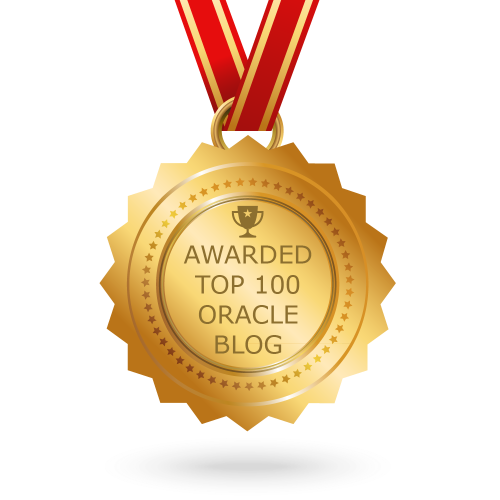Oracle Certified Master is one of the prestigious exam in database world. Most of the Oracle DBA have a dream to be OCM certified. This certification will distinguish you from others in Market.
Prerequisites to be OCM Certified: Details
Oracle 12c OCM exam is based on Oracle Database 12c Release 1 and includes the use of Oracle Real Application Clusters (Oracle RAC). The operating system is Oracle Linux Server Release 6.5.
Exam Environment
https://education.oracle.com/oracle-database-12c-certified-master-exam/pexam_12cOCM
- Oracle Linux Release 6.5 64 bit
- Mozilla Browser, Text (emacs, gedit) and vi editors
- Shell environment: bash, csh
- Use either CLI or GUI environment and tools when available
- Oracle Database 12c Enterprise Edition Release 12.1.0.2.0 64 bit
- Oracle Grid Infrastructure 12c Release 1 (12.1.0.2)
- Oracle Enterprise Manager Cloud Control 12c Rel 4
Minimum Skill-set wise Passing Scores:
- Skill Set 1 : Create Database and Network Configurations : 60.29%
- Skill Set 2 : Managing Database Availability : 46.93%
- Skill Set 3 : Data Warehouse Management : 34.14%
- Skill Set 4 : Data Management : 33.92%
- Skill Set 5 : Performance Management : 39.13%
- Skill Set 6 : Data Guard : 43.39%
- Skill Set 7 : Grid Infrastructure : 53.84%
- Skill Set 8 : Real Application Cluster Database : 37.83%
Passing Score : 59.95%
Exam Topics:
General Database and Network Administration
- Create and manage pluggable databases
- Administer users, roles, and privileges
- Configure the network environment to allow connections to multiple databases
- Administer database configuration files
- Configure shared server
- Manage network file directories
Data Warehouse Management
- Manage database links
- Manage a fast refreshable materialized view
- Create a plug-in tablespace by using the transportable tablespace feature
- Optimize star queries
- Configure parallel execution
- Apply a Patch
- Configure Automatic Data Optimization, In-Row Archiving, and Temporal Validity
- Manage external tables
Performance Management
- Configure the Resource Manager
- Tune SQL statements
- Use real application testing
- Manage SQL Plan baselines
- Capture performance statistics
- Tune an instance
- Configure and manage result cache
- Manage extended statistics
- Create and manage partitioned indexes
- Control CPU use for Oracle Instances
- Configure and manage “In Memory” features
Manage Database Availability
- Install the EM Cloud Control agent?Configure recovery catalog
- Configure RMAN
- Perform a full database backup
- Configure and monitor Flashback Database
Data Management
- Manage additional buffer cache
- Optimize space usage for the LOB data
- Manage an encrypted tablespace
- Manage schema data
- Manage partitioned tables
- Set up Fine-Grained Auditing
- Configure the database to retrieve all previous versions of the table rows
Data Guard
- Administer a Data Guard environment
- Create a physical standby database
- Configure a standby database for testing
- Configure a standby database to apply redo
- Configure a standby database to use for reporting
- Configure fast start failover
- Manage DDL in a Data Guard environment
Grid Infrastructure
- Install Oracle Grid Infrastructure
- Create ASM Disk Groups
- Create and manage ASM instances
- Configure ASM Cloud File System (ACFS)
- Administer Oracle Clusterware
- Manage Flex Clusters and Flex ASM
Real Application Cluster Database
- Install Oracle Database software
- Create a Real Application Clusters (RAC) database
- Configure Database Services
- Administer Oracle RAC databases on one or more cluster nodes


